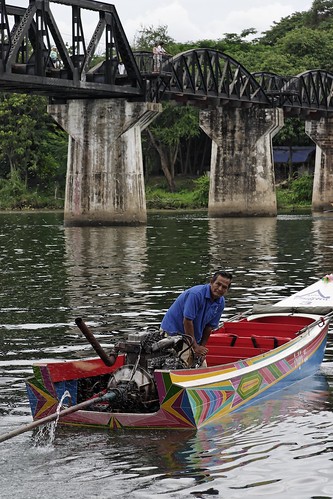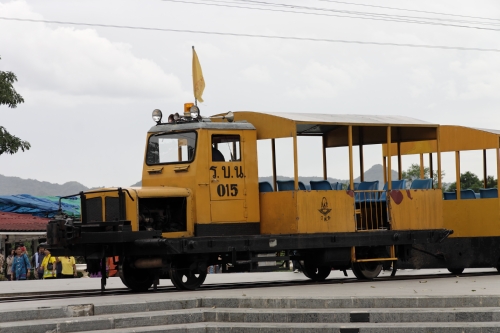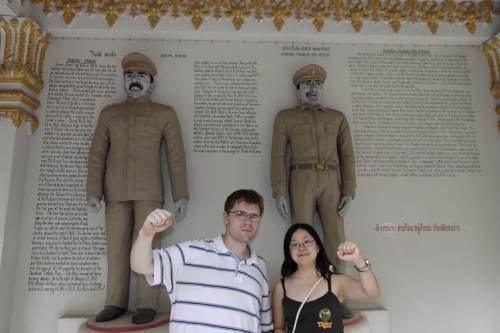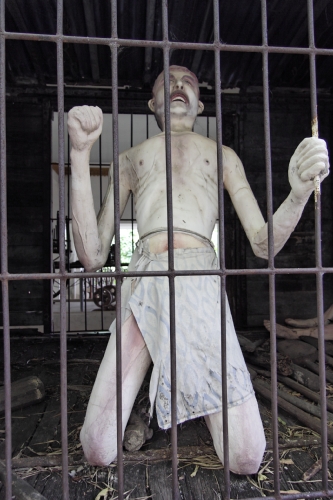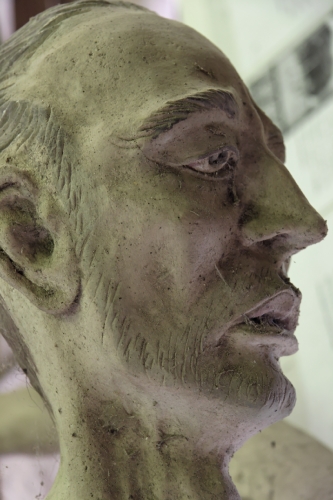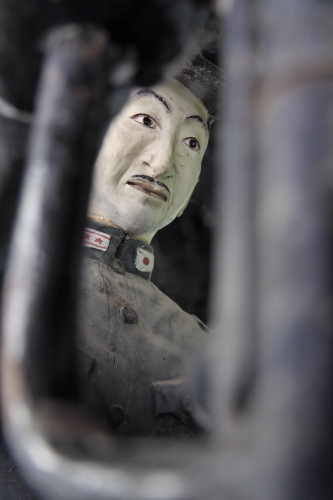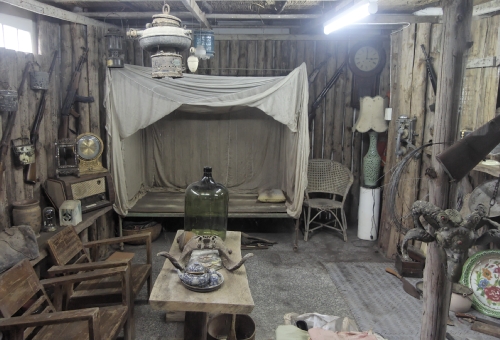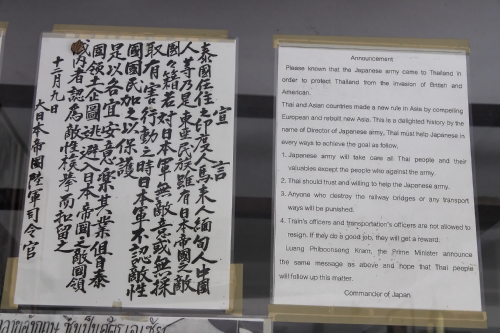Following up on my initial report on November 4 and an update on November 21, here is yet more information on the Tamogami Toshio affair.
Most important is today’s Asahi front-page article, which is the best media confirmation so far of my initial hypothesis on the entire Tamogami/APA link, which readers may remember was as follows:
Combining his attraction to both power and military, [APA CEO Motoya Toshio] invited ASDF General Tamogami Toshio into his circle, bringing him to the Wine no Kai and to address the launch party for his latest right-wing tract. Motoya then had APA sponsor an essay contest promoting his book-possibly an illicit use of corporate funds-with the grand prize awarded to Tamogami , in a decision I suspect was actually arranged by Motoya personally, with the “selection committee” only choosing the lesser prizes.
Adam spotted the Asahi article and forwarded it to me, and provided a summary in the comments of my previous Tamogami post.
Apparently, several of the contest judges were really miffed at how Motoya ran things… Of over 400 entries, the company only sent the four-member panel 25 for the first round of anonymous scoring. Motoya himself was apparently on the panel (though APA did not list him as a judge), and he gave the top score to Tamogami’s (anonymous) essay while giving low scores to all the others. In the second round of judging, the names and profiles of the contestants were revealed and the judges met to discuss the winner. Three essays, including Tamogami’s, had the same number of points. Motoya apparently proposed that they just give the prize to Tamogami and award a kind of tied-for-second prize to the others. None objected.
Apart from Motoya, the judges named in the report:
Shuichi Yamamoto, a former Diet member’s secretary and current legal scrivener and guest lecturer in Okayama Prefecture.
Nobuaki Hanaoka, conservative commentator
Kazuo Komatsuzaki, President of (Yomiuri affiliated) Hochi Shimbun
Apparently the fourth judge was Motoya, but I can’t tell for sure by the way the report is written.
The article also includes direct quotes from two of the judges. Yamamoto said that he “felt there was something unnatural about how Motoya gave low scores to pretty much all of the essays that the other judges gave high scores to.” Yamamoto went on to accuse Motoya directly, saying that “one has to believe that the top essay was chosen to award the prize money to Tamogami.” Komatsu gave similar statement, saying that “Thinking about it now, Motoya must have known all along that it was Tamogami’s essay, and deliberately put it on top.” Oddly, the article makes no mention of conservative commentator and Sophia University English Professor Watanabe Shoichi, who is described on the APA web site as head of the judging committee.
The article certainly does make it sound as if Motoya was one of the judges, although I do not believe any previous source has acknowledged his direct involvement. Naturally there was no comment from APA for this article. Considering that even the Inspector General’s Office of Legal Compliance of the JSDF is investigating the possibility that Tamogami encouraged his subordinate officers to enter the contest, and the fact that Tamogami and Motoya had a relationship stretching back a decade when Tamogami was commander of the very same Komatsu air force base that Motoya runs a civilian support committee for, it seems very likely that the entire essay contest was in fact staged.
There is even speculation that the conspiracy goes even deeper than I suggested in my initial post. According to the Japan Times on November 20, in an article which also presents many of the connections I had pointed out previously:
Hirofumi Hayashi, a professor at Kanto Gakuin University and an expert on modern Japanese history, pointed out that Tamogami may have landed the top post because of his close ties with Toshio Motoya, head of hotel and condo developer Apa Group, who had connections with then Prime Minister Shinzo Abe, a staunch nationalist.
Is it really possible that the Motoya connection could be that strong? Could Abe have actually been persuaded to promote a known militarist to the head of the JASDF based on the recommendation of an ultra-rightwing activist?
Another professor, Kotetsu Atsuhi (whose published books include one on relations between the civil government and military in modern Japan), was quoted by the Japan Times as saying “Mr. Tamogami went out of control and his act was close to a coup.” In a Mainichi debate column he gives a more detailed statement, which reads in part:
In the final paragraph of the essay it is written that the SDF needs to return to a position of independence, away from the eternal dependence on America. This adds up to the “Asian Monroe Doctrine” that Japan had before the War. For Japan to have singular hegemony in Asia, they thought that they had to secure their own sources of raw materials and military equipment, without depending on America or Britain, and the fact that this spread to the financial and political spheres as well is one of the factors that opened the road to war. I am horrified to think that there may be a desire for this in today’s uniformed officers.
The article also contains an opposing quote from right-wing historian Hata Ikuhiko, in which he says:
Compared with the pre-war system, things are effectively controlled in Japan now. Today, you do not hear the uneasy discussion of a coup de’etat that you did 20 or 30 years ago. If the defense minister and prime minister, who is the Commander in Chief, do their jobs properly then the SDF should not be able to run wild and take hold of political power.
The two problems with this statement are that A: following the Tamogami affair there actually ARE people (Koketsu for a start) mentioning the danger of a coup, and B: Prime Minister Abo Shinzo was the one who appointed Tamogami to his job in the first place. On the other hand, Tamogami’s prompt dismissal following the uproar over the APA essay demonstrates the current effectiveness of civilian control. And although current PM Aso Taro did promptly dismiss Tamogami, he is well known for having a similar view of history.
(Incidentally, Hata’s essay calling for the restraction of the Kono Statement acknowledging Japanese responsibility for comfort women is among those offered as a free download by the so-called “Society for the Dissemination of Historical Fact”, which publicizes the Japanese right-wing historical revisionist agenda in English, and includes such people as Watanabe Shoichi and Japafilic Taiwanese Ko Bunyu on its board.)
Whan now-PM Aso was CEO of his family firm, Aso Cement Company in 1975 (he was CEO from 73-79, see here), they published an official corporate history which closely matches the views of Tamogami and Motoya. As described in a FEER article by Mindy Kotler (head of DC’s Asia Policy Point, known for her testimony on behalf of the US House resolution calling on Japan to apologize for comfort women, and William Underwood, a specialist in the history of Japanese WW2 era forced labor):
The “Aso Fights” section of the book states that top U.S. leaders had detailed knowledge of Japanese military plans prior to Dec. 7, 1941. Japan was purposely allowed to strike the first blow, in this telling, so that “Remember Pearl Harbor” could become a rallying cry for Americans. Like Gen. Tamogami, the Aso historians conclude that “this cleverly united American opinion for war against Japan.”
Aso Mining then became a “kamikaze special attack production unit,” according to the book. “People like Korean laborers and Chinese prisoners of war filled the void” in Kyushu’s coalfields as Japanese miners left for military service.
Despite having fired Tamogami, he and Aso are still ultimately on the same side in the history wars, along with former Prime Ministers Mori and Abe, at the very least. (Tamogami has been quoted as saying that “former PM Abe and former PM Mori also support my philosophy.)
While Prof. Koketsu’s coup reference may be a bit exaggerated, there have been a number of comparisons made with the February 26 incident of 1936, a failed coup in which “a group of young radical Army officers led some 1,400 troops under their command on a attack on the Prime Minister’s residence and other buildings in Tokyo, killing Home Minister SAITO Makoto, Finance Minister TAKAHASHI Korekiyo, and Army Inspector General of Military Training WATANABE Jotaro.” As has often been the case in Japanese military coups (such as the Meiji restoration), the young officers claimed to be fighting in the name of the Emperor, but when it was clear they lacked his support the rest of the military put down the revolt. This 2.26 Incident was famously orchestrated by “young officers” of the Imperial Way Faction, which was an unofficial grouping of hardcore rightist officers within the military, who called for a “Showa Restoration“-evoking the Meiji Restoration – in which the military would purge government and society of degenerate left-wing elements and re-institute traditional values based around militaristic Bushido.
The Imperial Way Faction was largely based around the philosophy of Araki Sadao, a rightist officer who ascended to the position of War Minister in 1931, after having served as Inspector General of Military Training, and began publically promoting the “Imperial Way” in a September 1932 news conference. Although he was forced to retire from the military following the failed 1936 coup, he was apparently not accused of any direct involvment and was allowed to become Minister of Education the following year, a job which allowed him to promote his militaristic agenda in the civil sphere.
Although the names “Tamogami” and “Araki” have as yet only appeared appeared together in a handful of obscure Japanese blogs, I do sense some concern that Tamogami could be (or at least could have been) an Araki-like figure. I strongly doubt anyone is particularly worried that Tamogami himself was plotting a coup, but rather a lot of people are worried about the influence he may have had on subordinates, as represented by the dozens of JASDF members under his command who submitted essays to the contest. Then, does this mean that people should be worried that the 94 who served under Tamogami and submitted essays will be a “young officer” vanguard of the Heisei Restoration armed uprising circa 2012?
This is another pretty farfetched scenario. Japan today is a very different country from the one it was in the 1930s, with a decades-long popular antiwar attitude that few could have predicted in the 1930s. Shifting back towards that level of militarism would likely require both a generation of re-education and a massive shift in the international balance. But the militaristic right wing is thinking long-term. They have been pushing their version of history increasingly hard recently, but despite much of the media coverage has actually not been very successful in altering public school education. And yet, the general attitude towards the revision of the Japanese constitution’s famous war-renouncing “Article 9” seems to have gone from being an absolute impossibilty to being undesirable but perhaps only a matter of time.
Some time in the next several months Japan will hold a general election, in which it is very possibly that the opposition Democratic Party of Japan will take power for the first time. This would be a stunning defeat for Tamogami’s supporters, however many of them really exist. Despite political apathy, most of Japan still firmly believes in national pacifism, and if the LDP falls from power it will likely be in part due to Tamogami.

